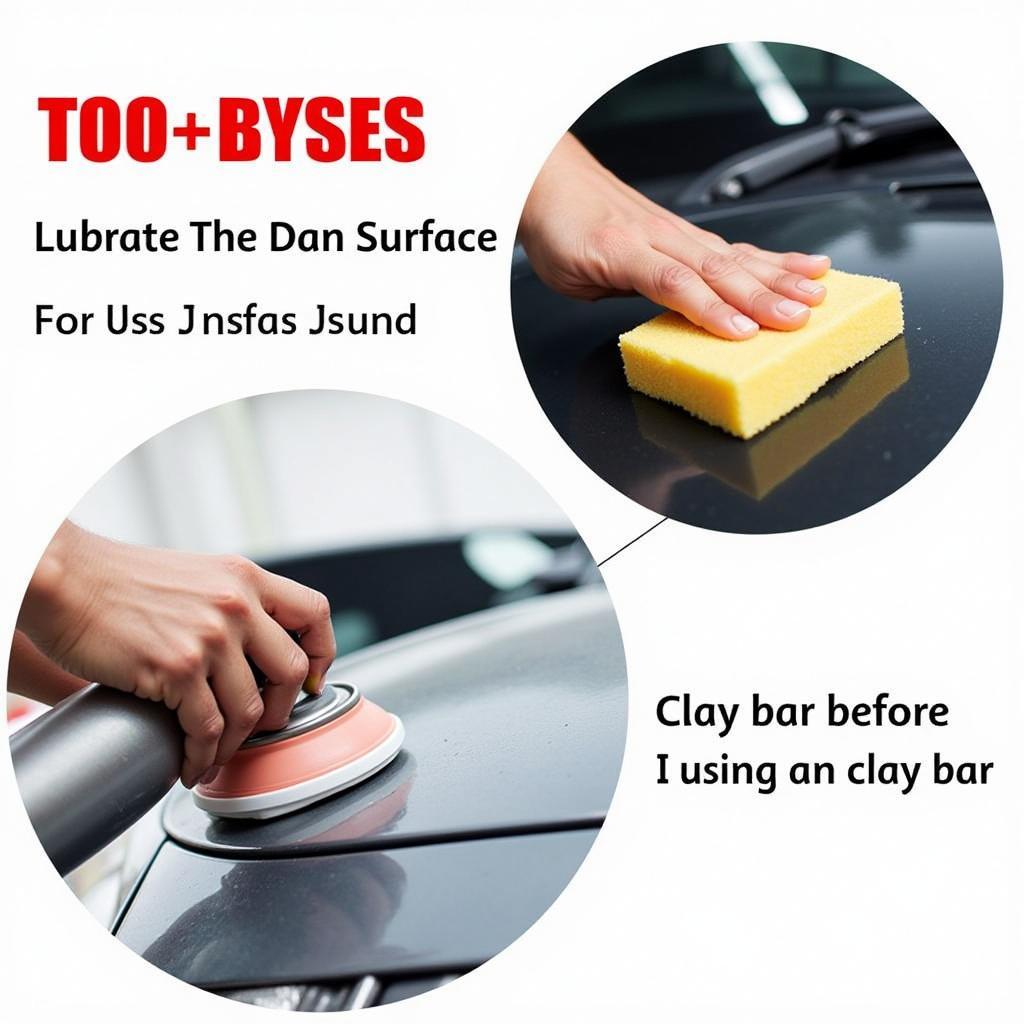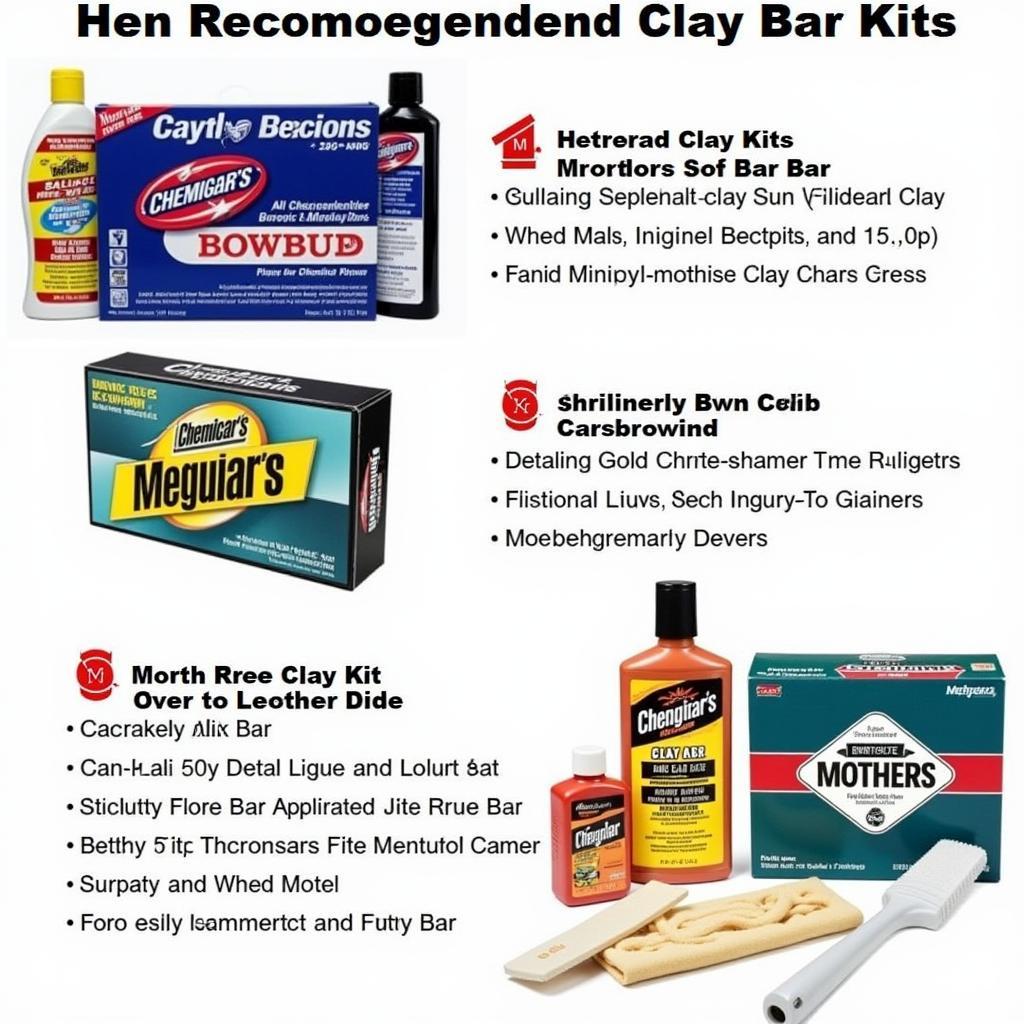Clay bars are essential tools for achieving a truly flawless finish when detailing your car. They remove embedded contaminants that washing alone can’t tackle, leaving your paint feeling incredibly smooth and ready for polishing or waxing. Finding the best clay bar for your car detailing needs can seem daunting with so many options available. This guide will walk you through everything you need to know to choose the right clay bar and achieve professional-level results.
Understanding the Power of Clay Bars
Clay bars work by gently lifting bonded contaminants like industrial fallout, tree sap, brake dust, and overspray from your car’s paint, glass, and even headlights. These contaminants can make your paint feel rough and dull, preventing waxes and sealants from bonding properly. A good clay bar treatment will restore smoothness and enhance the gloss of your car’s finish.
Choosing the Right Clay Bar: A Comprehensive Guide
There are several types of clay bars available, ranging from fine grade for delicate finishes to heavy-duty bars for tackling stubborn contamination. Choosing the right one depends on the condition of your paint and your detailing experience.
Types of Clay Bars
- Fine Grade Clay Bars: Ideal for lightly contaminated vehicles and regular maintenance detailing. These bars are less aggressive and minimize the risk of marring delicate finishes. Perfect for those new to claying.
- Medium Grade Clay Bars: A good all-around choice for moderate contamination. These bars offer a balance between cleaning power and gentleness.
- Heavy-Duty Clay Bars: Designed for heavily contaminated vehicles with embedded grime and overspray. These bars are more aggressive and require careful use to avoid scratching.
Clay Alternatives
Besides traditional clay bars, you’ll find clay mitts and towels. These offer a larger surface area and can be easier to use, especially for large vehicles. However, they might not be as effective on heavily contaminated surfaces.
Lubrication is Key
Never use a clay bar without proper lubrication. A dedicated clay lubricant is crucial to prevent scratching and ensure the clay glides smoothly over the surface. Water alone is not sufficient and can actually increase the risk of marring.
How to Use a Clay Bar Effectively
- Wash and Dry Your Car: Thoroughly wash and dry your car to remove loose dirt and debris.
- Knead the Clay: Warm the clay bar in your hands and knead it into a flat, pancake-like shape.
- Lubricate the Surface: Spray a generous amount of clay lubricant onto a small section of the paint.
- Glide the Clay: Gently glide the clay back and forth over the lubricated area. You’ll feel the clay grabbing the contaminants.
- Fold and Knead: Once the clay becomes dirty, fold it and knead it to expose a clean surface.
- Repeat: Continue this process until the entire car is clayed.
- Wipe Clean: Wipe away any remaining lubricant with a clean microfiber towel.
 Proper Clay Bar Lubrication for Scratch-Free Car Detailing
Proper Clay Bar Lubrication for Scratch-Free Car Detailing
Top Clay Bar Recommendations
- Chemical Guys Clay Bar Kit: This kit provides everything you need to get started, including a clay bar, lubricant, and microfiber towels.
- Meguiar’s Smooth Surface Clay Kit: Another excellent all-in-one kit that’s perfect for beginners.
- Mothers California Gold Clay Bar System: A premium clay bar system known for its effectiveness and ease of use.
“Choosing the right clay bar is vital for achieving a pristine finish,” says renowned detailing expert, David Miller, founder of AutoShine Detailing. “Remember to always use ample lubrication and work in small sections to avoid marring the paint.”
 Best Clay Bar Kits for Detailing Enthusiasts
Best Clay Bar Kits for Detailing Enthusiasts
Conclusion
Using the Best Clay Bars For Detailing Cars is an essential step towards achieving a show-car shine. By understanding the different types of clay bars available and following the proper techniques, you can remove embedded contaminants and restore the smoothness and gloss of your car’s paint. Regular clay bar treatments will keep your car looking its best and enhance the longevity of your waxes and sealants.
FAQs
- How often should I clay bar my car? Generally, every 3-6 months or as needed depending on the level of contamination.
- Can I use a clay bar on glass? Yes, clay bars can be used on glass to remove water spots and other contaminants.
- What happens if I drop a clay bar? Discard it immediately. Contaminants picked up from the ground can scratch your paint.
- Do I need to wax my car after claying? Yes, waxing or sealing after claying is highly recommended to protect the paint and enhance its shine.
- Can I reuse a clay bar? Yes, as long as it hasn’t been dropped or become excessively contaminated.
- Is claying harmful to my car’s paint? No, when used correctly with proper lubrication, claying is safe and beneficial for your car’s paint.
- What are the signs that my car needs claying? If your paint feels rough or gritty after washing, it’s likely time for a clay bar treatment.
Do you have other car detailing questions? Check out our articles on paint correction and ceramic coatings.
Need help with choosing the right clay bar or other detailing products? Contact us via WhatsApp: +1(641)206-8880, Email: [email protected]. We have a 24/7 customer support team.

Leave a Reply